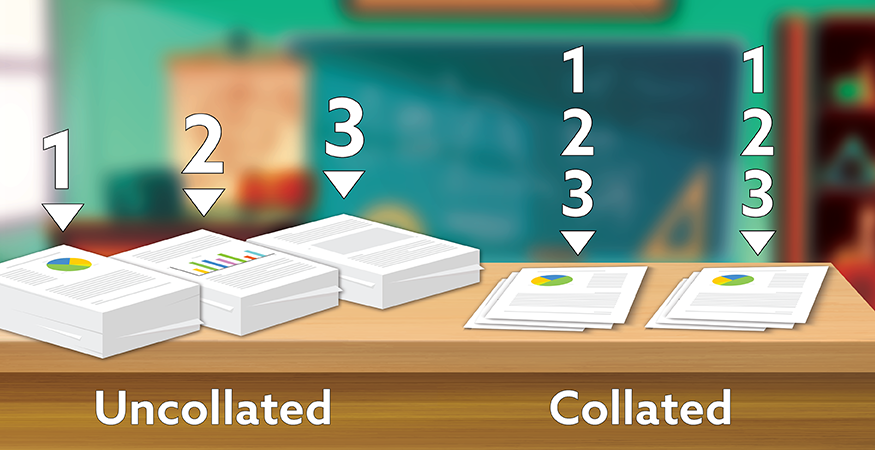What Does “Collate” Mean?
The term “collate” is commonly used in various professional and academic settings, but its meaning may not always be immediately clear to everyone. In this comprehensive article, we’ll explore the definition of “collate,” its practical applications, and provide a detailed FAQ section to help you better understand this important concept.
Key Facts about the Meaning of “Collate”
| Fact | Source |
|---|---|
| “Collate” means to gather and arrange items, especially pages or documents, in a specific order. | Wikipedia |
| The term is often used in the context of printing, publishing, and document management. | N/A |
| Collating can involve organizing materials by page number, section, or other criteria to ensure the correct sequence. | N/A |
| Proper collation is important for ensuring the accuracy and completeness of documents, presentations, and other materials. | N/A |
| The process of collating can be done manually or with the help of specialized equipment, such as collating machines. | N/A |
Understanding the Meaning of “Collate”
The term “collate” refers to the act of gathering and arranging items, typically pages or documents, in a specific order or sequence. This process is often associated with printing, publishing, and document management, where maintaining the correct order and organization of materials is crucial.When you collate something, you are essentially putting the individual components together in a specific way, ensuring that they are arranged in the proper sequence. This can involve organizing materials by page number, section, or other criteria to ensure the accuracy and completeness of the final product.The act of collating can be done manually, such as when an individual physically gathers and arranges pages or documents, or it can be automated using specialized equipment, such as collating machines or software. Regardless of the method used, the goal of collation is to ensure that the materials are presented in the correct order and format.
Practical Applications of Collation
Collation is an essential process in various professional and academic settings, including:
Printing and Publishing
In the printing and publishing industry, collation is crucial for ensuring that pages or documents are assembled in the correct order. This is particularly important for books, magazines, and other printed materials, where the sequence of pages directly impacts the readability and usability of the final product.
Document Management
Collation is also important in document management, where individuals or organizations need to maintain the proper organization and sequence of materials, such as reports, contracts, or presentations. Proper collation helps to ensure the accuracy and completeness of these documents.
Presentations and Slideshows
When creating presentations or slideshows, collation is necessary to ensure that the slides are arranged in the correct order. This helps to maintain the flow and coherence of the presentation, making it easier for the audience to follow along.
Academic and Research Settings
In academic and research settings, collation is often used when compiling research papers, dissertations, or other scholarly materials. Ensuring that the pages or sections are properly collated helps to maintain the integrity and structure of the final document.
Event Planning and Coordination
Collation can also be important in event planning and coordination, where organizers need to ensure that materials such as programs, name tags, or handouts are assembled in the correct order and distributed to the appropriate attendees.
Potential Challenges and Considerations
While collation may seem like a straightforward process, there are some potential challenges and considerations to keep in mind:
Accuracy and Attention to Detail
Collation requires a high level of attention to detail to ensure that the materials are arranged in the correct order. Even a small mistake in the collation process can lead to significant issues, such as missing pages or out-of-order content.
Time and Efficiency
Depending on the volume of materials and the complexity of the collation process, it can be time-consuming and labor-intensive. Efficient collation strategies, such as the use of automated equipment or software, can help to streamline the process and save time.
Consistency and Standardization
In some settings, such as large organizations or academic institutions, it may be important to maintain consistent collation standards and procedures to ensure that materials are organized in a uniform way across different departments or projects.
Conclusion
In conclusion, “collate” is a term that refers to the act of gathering and arranging items, typically pages or documents, in a specific order or sequence. This process is essential in a variety of professional and academic settings, where maintaining the accuracy and completeness of materials is crucial.By understanding the meaning and practical applications of collation, you can better navigate the various situations where this important concept is used, ensuring that your materials are organized and presented in the most effective way possible.
FAQ: What Does “Collate” Mean?
1. What is the definition of “collate”?
“Collate” means to gather and arrange items, especially pages or documents, in a specific order.
2. In what contexts is the term “collate” commonly used?
The term “collate” is often used in the context of printing, publishing, document management, presentations and slideshows, academic and research settings, and event planning and coordination.
3. Why is proper collation important?
Proper collation is important for ensuring the accuracy and completeness of documents, presentations, and other materials, as well as maintaining the flow and coherence of the final product.
4. How can collation be done?
Collation can be done manually, such as by physically gathering and arranging pages or documents, or it can be automated using specialized equipment, such as collating machines or software.
5. What are some potential challenges associated with collation?
Potential challenges include ensuring accuracy and attention to detail, managing time and efficiency, and maintaining consistency and standardization, especially in large organizations or academic institutions.
6. How does collation differ from other document management processes?
Collation is specifically focused on arranging items, such as pages or documents, in a specific order, whereas other document management processes may involve tasks like organizing, storing, or retrieving documents.
7. Why is it important to understand the meaning of “collate”?
Understanding the meaning of “collate” is important because it is a commonly used term in various professional and academic settings, and being able to accurately define and apply the concept can help ensure the proper organization and presentation of materials.



